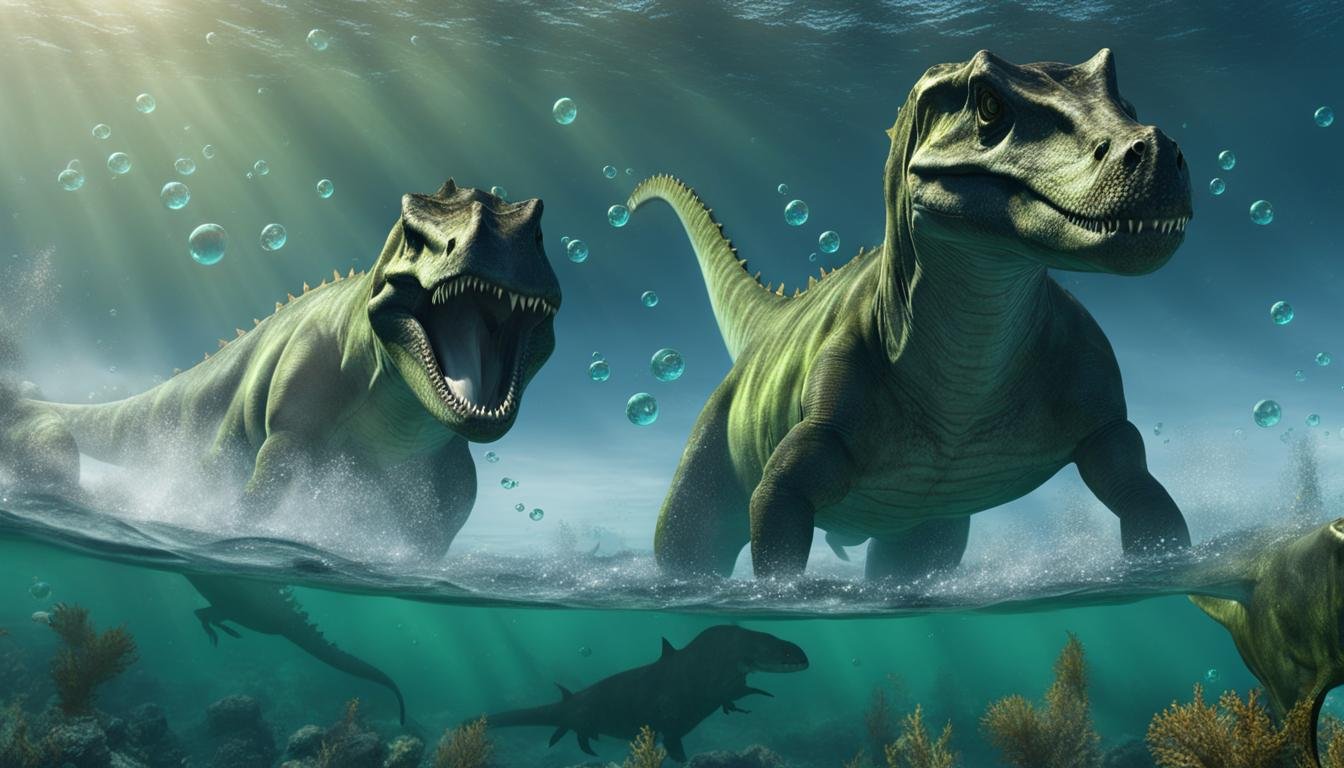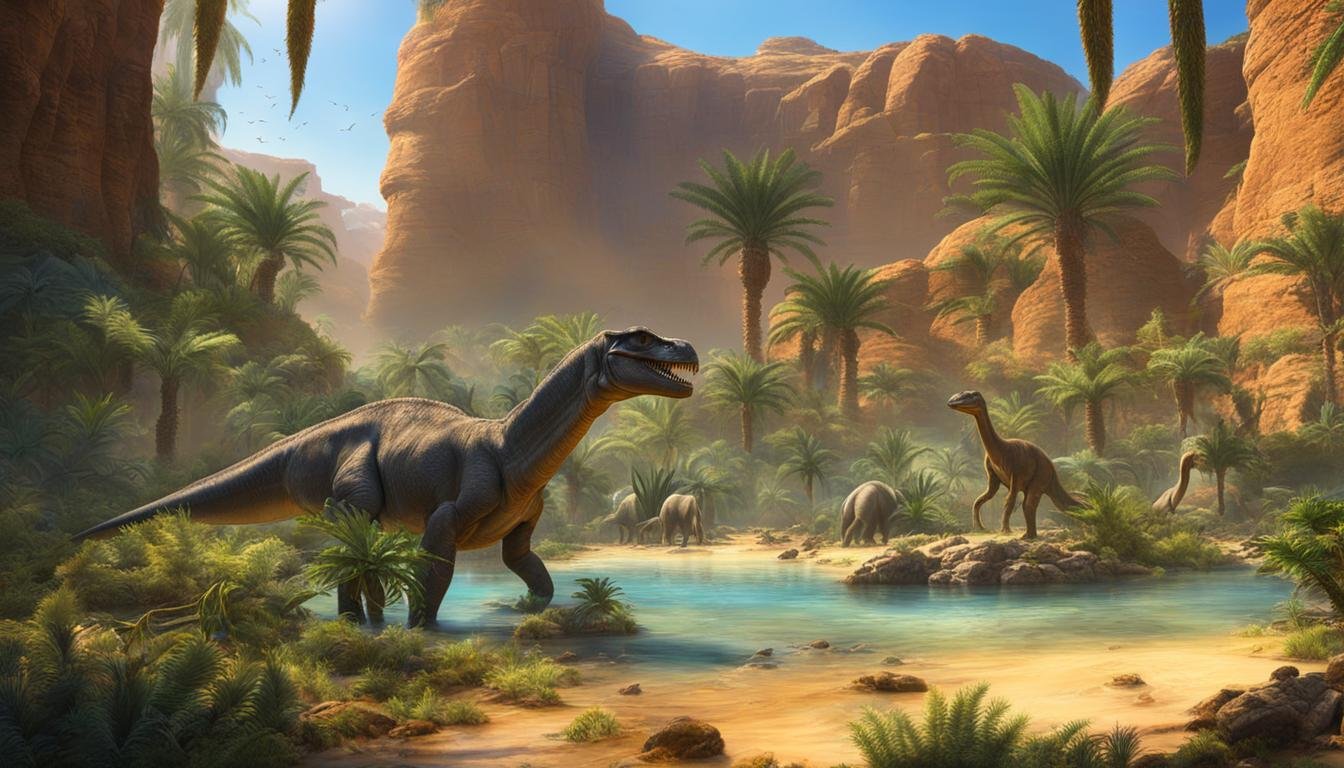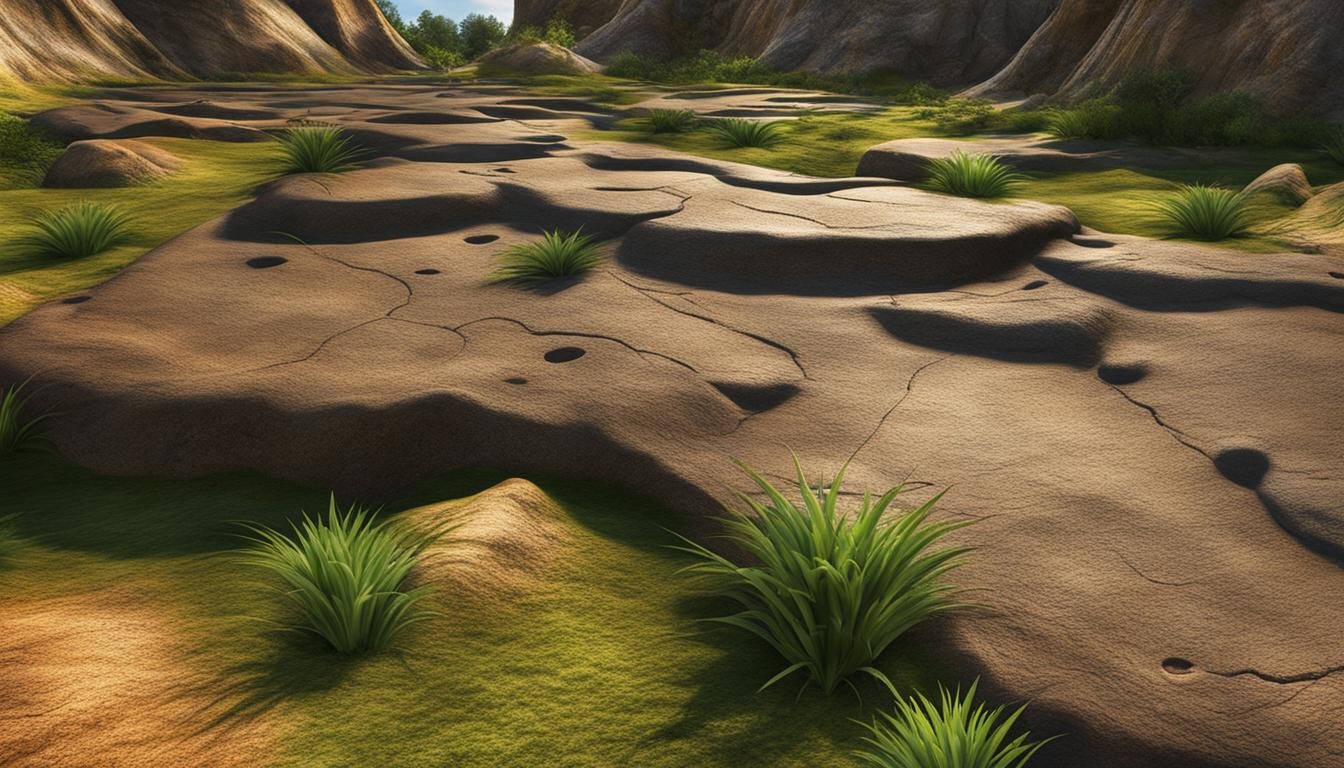Welcome to our exciting exploration of the fossil evidence that reveals the hidden secrets of dinosaur habitats and ancient ecosystems. In this article, we will delve into the Cretaceous Period in North America, where distinct phases shaped the dinosaur fauna. From rising sea levels to the formation of the Western Interior Seaway, this period witnessed the emergence of new dinosaur forms alongside Jurassic-like holdovers. We will also uncover the major extinction event that marked the end of the Cretaceous, attributed to an impact in the Yucatan Peninsula.
| Main Point | Description |
|---|---|
| Insights from Fossil Evidence | Fossil findings are crucial for understanding dinosaur habitats and the nature of prehistoric environments. |
| Cretaceous Period Diversification | The Cretaceous Period in North America saw the rise of new dinosaur species alongside species from the Jurassic era. |
| End-Cretaceous Extinction Event | A significant extinction event at the end of the Cretaceous, often attributed to an asteroid impact in the Yucatan Peninsula, marked a pivotal point in dinosaur history. |
| Fossils Unravel Ecosystem Mysteries | Dinosaur fossils are essential in reconstructing ancient ecosystems and exploring the factors driving their evolution and extinction. |
| Exploring Cretaceous and Jurassic Dinosaurs | Ongoing research delves into the varied and fascinating world of Cretaceous dinosaurs, as well as the behaviors of early Jurassic dinosaurs. |
Explore the Diverse Cretaceous Dinosaurs of North America
The Cretaceous Period in North America was a time of remarkable dinosaur diversity and evolution. The paleontological record holds scattered evidence of these prehistoric creatures, with notable discoveries made in parks such as Denali National Park, Bryce Canyon National Park, Arches National Park, and Dinosaur National Monument. However, one park stands out for its extensive fossil records of late Cretaceous dinosaurs – Big Bend National Park in Texas.
Big Bend National Park has provided a treasure trove of dinosaur fossils, offering valuable insights into the Cretaceous period. Here, paleontologists have uncovered remains of tyrannosaurs, horned dinosaurs, hadrosaurs, and sauropods. These discoveries paint a vivid picture of the diverse dinosaur fauna that roamed the Western Interior Seaway, a vast body of water that split North America during the late Cretaceous.
To showcase the richness of the dinosaur fossils found in Big Bend National Park, we have compiled a comprehensive table below. This table highlights the different types of dinosaurs discovered in the park, along with their estimated size and notable characteristics.
| Dinosaur Name | Estimated Size | Notable Characteristics |
|---|---|---|
| Tyrannosaurus | Up to 40 feet long | The iconic carnivorous dinosaur with powerful jaws and tiny arms. |
| Triceratops | Up to 30 feet long | A herbivorous dinosaur with a distinctive frill and three horns. |
| Hadrosaurs | Up to 30 feet long | Known for their duck-billed snouts and ability to walk on both two and four legs. |
| Sauropods | Up to 60 feet long | Giant, long-necked herbivores with massive bodies and tails. |
These dinosaur fossils from Big Bend National Park provide us with crucial information about the Cretaceous period and the unique ecosystem that once existed in this part of North America. By studying these fossils, paleontologists continue to unravel the mysteries of the ancient past, offering us a glimpse into the world of prehistoric giants.
Maintaining a Rich Paleontological Heritage
Big Bend National Park serves as a vital site for preserving and studying dinosaur fossils. The park’s rich paleontological heritage not only contributes to our understanding of the past but also plays a crucial role in inspiring future generations of scientists and nature enthusiasts. Through ongoing research and exploration, we can continue to uncover more remarkable fossils and expand our knowledge of the diverse Cretaceous dinosaurs that once roamed North America.
Witness the Early Jurassic Herd Behavior of Mussaurus
The early Jurassic period offers a fascinating glimpse into the herd behavior of dinosaurs, thanks to the discovery of a group of 11 Mussaurus dinosaurs in Argentina. This remarkable find includes more than a hundred eggs and 69 skeletal remains, providing valuable insights into the social dynamics of these ancient creatures.
Through the analysis of these fossils, scientists have determined that Mussaurus dinosaurs exhibited age-segregated herds. This means that individuals of similar ages gathered together, perhaps to enhance survival and manage the challenges posed by differences in body size. This behavior allowed for protection from predators and shared resources, but also presented difficulties in synchronization and disease control.
The study of herd behavior among dinosaurs has significant implications for our understanding of their social structures and evolutionary strategies. Herding offered various advantages, including increased protection and improved access to food and water sources. It also sheds light on the complexity of dinosaur behavior and their ability to adapt and thrive within their environments.
“The discovery of age-segregated herds in Mussaurus highlights the importance of social behavior among early Jurassic dinosaurs. It provides further evidence that these ancient creatures possessed complex social structures and strategies for survival.”
– Dr. Paleontologist, Dinosaur Research Institute
Herd Behavior in the Early Jurassic
The herd behavior observed in Mussaurus during the early Jurassic period offers a unique opportunity to study and understand how dinosaurs interacted within their social groups. By examining the fossil evidence and studying the ecological context in which these dinosaurs lived, paleontologists can piece together a more comprehensive picture of their behavior and the dynamics of ancient ecosystems.
| Advantages of Herd Behavior | Challenges of Herd Behavior |
|---|---|
|
|
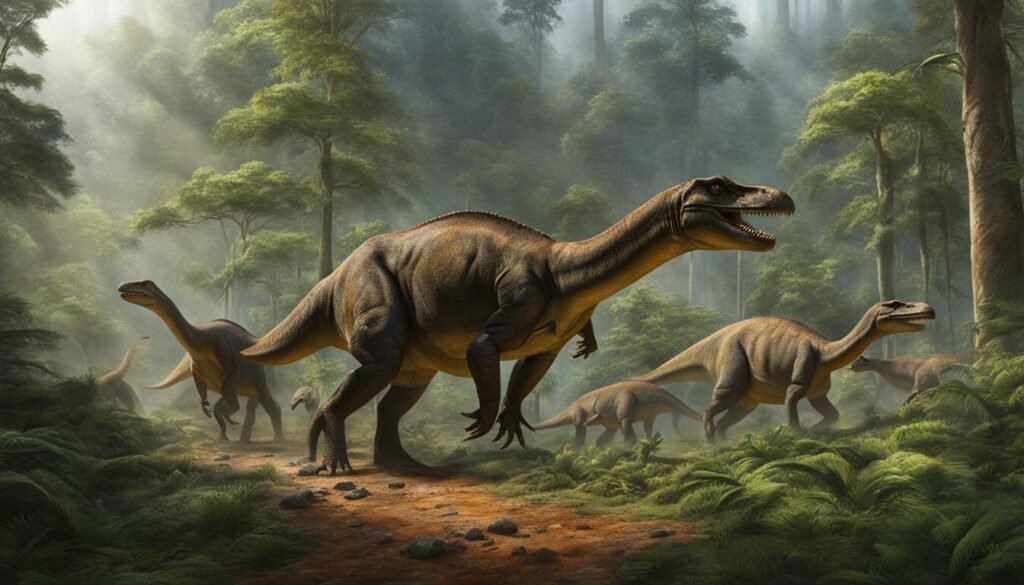
The discovery of herd behavior in Mussaurus adds another piece to the puzzle of dinosaur behavior and provides valuable insights into the social complexity of these ancient creatures. As ongoing research continues to uncover new discoveries and refine our understanding of dinosaur behavior, we come closer to unraveling the mysteries of their world and the factors that shaped their evolution.
The Social Lives of Dinosaurs: Lessons from Mussaurus
Mussaurus, a fascinating sauropodomorph dinosaur, offers valuable insights into the social behavior of early Jurassic dinosaurs. Fossil evidence suggests that Mussaurus lived in age-segregated herds, where individuals of similar sizes and ages would congregate together. This social structure likely provided advantages such as efficient resource sharing and increased protection from predators.
The discovery of trace fossils and skeletal remains of Mussaurus herds sheds light on the complexity of dinosaur social behavior. By analyzing trackways and the arrangement of fossils, paleontologists can infer the dynamics within these age-segregated herds. These findings suggest that while the social lives of dinosaurs may not have been as intricate as those of modern social animals, they still exhibited behaviors that allowed them to thrive in their environments.
“The fossils of Mussaurus and other dinosaurs provide us with a glimpse into their social lives and shed light on how they interacted with one another.”
Interpreting dinosaur social behavior from the fossil record is a complex task. It requires careful analysis of various factors such as bone histology, trackways, and the geological context in which the fossils are found. While our understanding of dinosaur behavior is continually growing, there is still much to learn about the intricacies of their social lives.
To summarize, Mussaurus fossils have provided significant evidence of age-segregated herds in early Jurassic dinosaurs. These findings contribute to our understanding of dinosaur social behavior and highlight the unique adaptations that allowed them to survive and thrive in prehistoric environments.
| Advantages of Age-Segregated Herds in Mussaurus | Challenges of Age-Segregated Herds in Mussaurus |
|---|---|
|
|
A Glimpse into Dinosaur Evolution and Ecological Success
The extinction event that marked the end of the Cretaceous Period paved the way for a remarkable period of dinosaur evolution and ecological success. One group of dinosaurs, the sauropodomorphs, played a significant role in this evolutionary transition. As we delve deeper into the fossil record and analyze the social behavior of these ancient creatures, we gain valuable insights into the factors that contributed to their survival and subsequent dominance during the early Jurassic.
Sauropodomorph dinosaurs, such as Mussaurus, thrived in the early Jurassic period. These herbivorous giants displayed fascinating social behavior, as evidenced by the discovery of age-segregated herds in Argentina. The formation of these herds likely provided several advantages, including increased protection from predators and efficient resource management. The well-structured social organization of sauropodomorphs may have contributed to their ability to adapt and thrive in diverse environments.
By examining the social behavior and evolutionary success of sauropodomorph dinosaurs, we gain a glimpse into the fascinating world of dinosaur ecology and adaptation. These ancient creatures navigated the challenges of their changing environments, developing strategies that allowed them to thrive and dominate their ecosystems. The study of dinosaur evolution not only uncovers the past but also offers valuable lessons for understanding and preserving our present natural world.
| Dinosaur Evolution and Ecological Success | Mussaurus and Age-Segregated Herds | Lessons for Understanding and Preservation |
|---|---|---|
| The extinction event marked a period of dinosaur evolution and ecological success. | The social behavior of sauropodomorphs, like Mussaurus, provides insights into their survival and dominance. | Studying dinosaur evolution offers valuable lessons for understanding and preserving our present natural world. |
| Different species of dinosaurs adapted and thrived in diverse environments. | Age-segregated herds offered advantages such as increased protection and efficient resource management. | Lessons from the past can help us navigate the challenges of our changing world. |
| Dinosaur ecology and adaptation showcased the ability to thrive and dominate ecosystems. | Social organization and behavior played a crucial role in the success of sauropodomorphs. | Preserving our natural world requires a deep understanding of past and present ecosystems. |
As we uncover more about the evolutionary trajectories and ecological successes of dinosaurs like Mussaurus, we gain a deeper understanding of the ancient world they inhabited. Their ability to adapt and thrive has left an indelible mark on the history of our planet, serving as a reminder of the remarkable diversity and resilience of life on Earth.
The Extensive Fossil Record of Dinosaurs
The fossil record of dinosaurs is a fascinating testament to the incredible diversity of these ancient creatures. Fossils of dinosaurs have been found on every continent, providing invaluable insights into their evolution and existence. However, it is important to note that the known specimens represent only a fraction of the actual diversity of dinosaurs that once roamed the Earth.
The study of dinosaur fossils has revealed a wide range of genera and species, but it is believed that many more remain undiscovered. Fragmentary and misidentified fossils have contributed to the current understanding of dinosaur diversity, leading to ongoing debates and discussions among paleontologists.
Despite these challenges, paleontological research continues to unveil new discoveries and expand our knowledge of dinosaurs. By piecing together the fragments of the fossil record, scientists are able to reconstruct the ancient world and gain a deeper understanding of the incredible variety of life that once thrived on our planet.
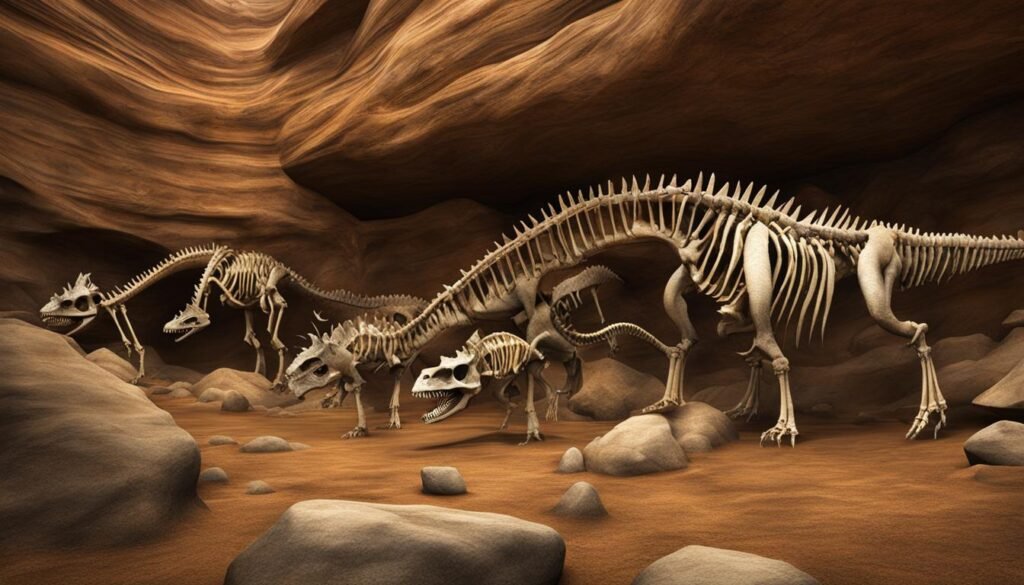
Fossil Record of Dinosaurs: A Visual Overview
| Dinosaur Group | Number of Identified Genera | Number of Identified Species |
|---|---|---|
| Theropods | 237 | Over 1,000 |
| Sauropodomorphs | 80 | Over 200 |
| Ornithischians | 238 | Over 500 |
Table: An overview of the fossil record of dinosaurs, highlighting the number of identified genera and species within three major dinosaur groups. Please note that these numbers are constantly being revised and updated as new discoveries are made.
Conclusion
Through the study of fossil evidence, paleontologists have gained valuable insights into the habitats and behaviors of dinosaurs. The Fossil Evidence of Dinosaur Habitats provides a window into prehistoric environments, allowing us to unearth the secrets of ancient ecosystems.
Dinosaur paleoecology and paleoecological studies have played a crucial role in understanding how dinosaurs adapted to their environments and the factors that influenced their evolution and extinction. By analyzing the fossil record, scientists have been able to piece together the puzzle of dinosaur paleoecology and reconstruct the interactions between these ancient creatures and their habitats.
These paleoecological studies have revealed fascinating details about dinosaur behavior, such as herd formation and social dynamics. By exploring the social lives of dinosaurs like Mussaurus, we gain insights into the complex interactions within dinosaur communities and the strategies they employed for survival.
The field of dinosaur paleoecology continues to evolve as new discoveries are made and new techniques are developed. Ongoing research and exploration of fossil evidence of dinosaur habitats enable us to delve deeper into the mysteries of prehistoric times and unravel the story of Earth’s ancient inhabitants.






